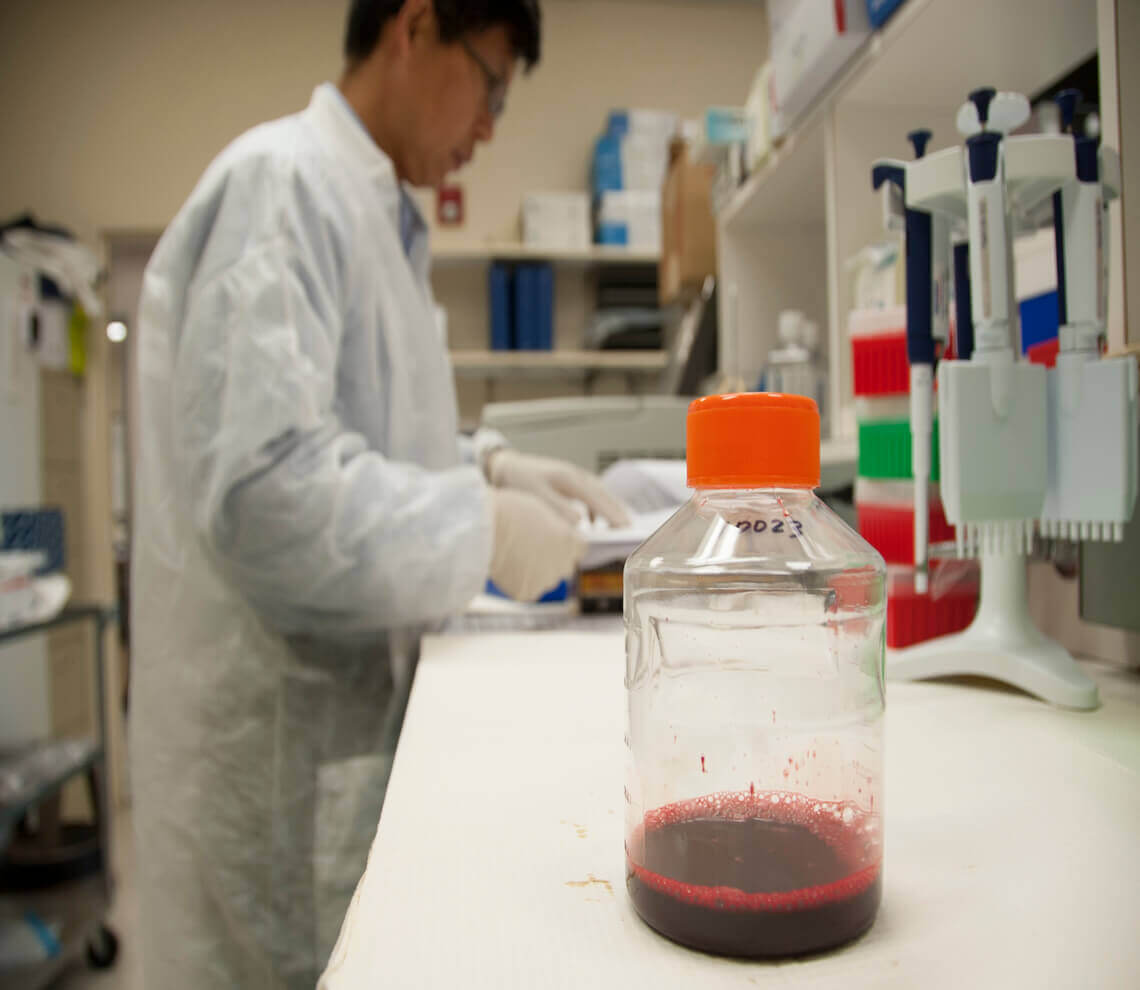- Our Suppliers
- MBS Monoclonals
- Mouse Anti-Human TLR2-BIOT
Product short description
Price:
387 EUR
Size:
100ug
Catalog no.:
GEN670138
Product detailed description
Gene name
N/A
Gene name synonims
N/A
Concentration
N/A
Purification method
N/A
Other gene names
N/A
Clone
2B4A1
Category
Antibodies
Clonality
Monoclonal
Immunoglobulin isotype
Mouse IgG2a
Latin name
Mus musculus
Tested applications:
Flow Cytometry
Subcategory
Mnoclonal antibodies
Host organism
Mouse (Mus musculus)
Form/Appearance
Biotin (BIOT) Conjugate
Other names
toll-like receptor 2; N/A
Also known as
Toll-like Receptor 2 (TLR2)
Description
This antibody needs to be stored at + 4°C in a fridge short term in a concentrated dilution. Freeze thaw will destroy a percentage in every cycle and should be avoided.
Species reactivity
Human (Homo sapiens); Due to limited knowledge and inability for testing each and every species, the reactivity of the antibody may extend to other species which are not listed hereby.
Properties
Human proteins, cDNA and human recombinants are used in human reactive ELISA kits and to produce anti-human mono and polyclonal antibodies. Modern humans (Homo sapiens, primarily ssp. Homo sapiens sapiens). Depending on the epitopes used human ELISA kits can be cross reactive to many other species. Mainly analyzed are human serum, plasma, urine, saliva, human cell culture supernatants and biological samples.
Test
MBS Monoclonals supplies antibodies that are for research of human proteins.Mouse or mice from the Mus musculus species are used for production of mouse monoclonal antibodies or mabs and as research model for humans in your lab. Mouse are mature after 40 days for females and 55 days for males. The female mice are pregnant only 20 days and can give birth to 10 litters of 6-8 mice a year. Transgenic, knock-out, congenic and inbread strains are known for C57BL/6, A/J, BALB/c, SCID while the CD-1 is outbred as strain.
Storage and shipping
The purified antibody (UNLB) is supplied as 0.1 mg purified immunoglobulin in 0.2 mL of 100 mM borate buffered saline, pH 8.2. No preservatives or amine-containing buffer salts added. Store at 2- 8 degree C. The fluorescein (FITC) conjugate is supplied as 100 tests in 1.0 mL of PBS/NaN3. Store the antibody ats should be kept in the range of 1-7 degrees Celsius.. The biotin (BIOT) conjugate is supplied as 0.1 mg in 0.2 mL of PBS/NaN3. Store the antibody ats should be kept in the range of 1-7 degrees Celsius.. The R-phycoerythrin (R-PE) and allophycocyanin (APC) conjugates are supplied as 100 tests in 1.0 mL of PBS/NaN3 and a stabilizing agent. Store the antibody ats should be kept in the range of 1-7 degrees Celsius.. Do not freeze! The low endotoxin, azide-free (LE/AF) antibody is supplied as 0.1 mg purified immunoglobulin in 0.2 mL of PBS. Aliquot and store at or below Store the antibody at -20 degrees Celsius.. With the exception of the low endotoxin, azide-free product, the vials should be stored at the antibodys should be kept in the range of 1-7 degrees Celsius.. Aliquot and freeze the low endotoxin, azide-free product the antibody should be stored at -20 degrees Celsius. immediately upon receipt. Each reagent is stable for the period shown on the bottle label if stored as directed.
Specificity and cross-reactivity
Human Toll-like Receptor 2 (TLR2) The Toll-like receptor (TLR) family is comprised of Type I transmembrane proteins characterized by an extracellular leucine-rich domain and a cytoplasmic tail that contains a conserved region call the Toll/IL-1 (TIR) domain. First discovered in Drosophila, TLRs recognize specific molecular patterns that are present in microbial components and respond to these components in order eliminate or limit invading microbes. To date, ten mammalian homologs of TLRs have been described. Activation of TLR2 leads to the initiation of apoptosis and the activation of the NK- kappa B pathway by the adaptor molecule MyD88. TLR2 recognizes and is activated by components from a broad variety of microorganisms including lipoproteins from Gram-negative bacteria, Mycoplasma, spirochetes, peptidoglycan and LTAs from Gram-positive bacteria, lipoarabinomannan from mycobacteria, glycoinositolphospholipids, phenolsoluble modulin, zymosan from yeast and neisserial porins. TLR2 has been reported to functionally associate with TLR1 and TLR6 in order to recognize various lipopeptides.1-16; Since it is not possible to test each and every species our knowledge on the corss reactivity of the antibodies is limited. This particular antibody might cross react with speacies outside of the listed ones.
© Copyright 2016-Tech News . Design by: uiCookies

